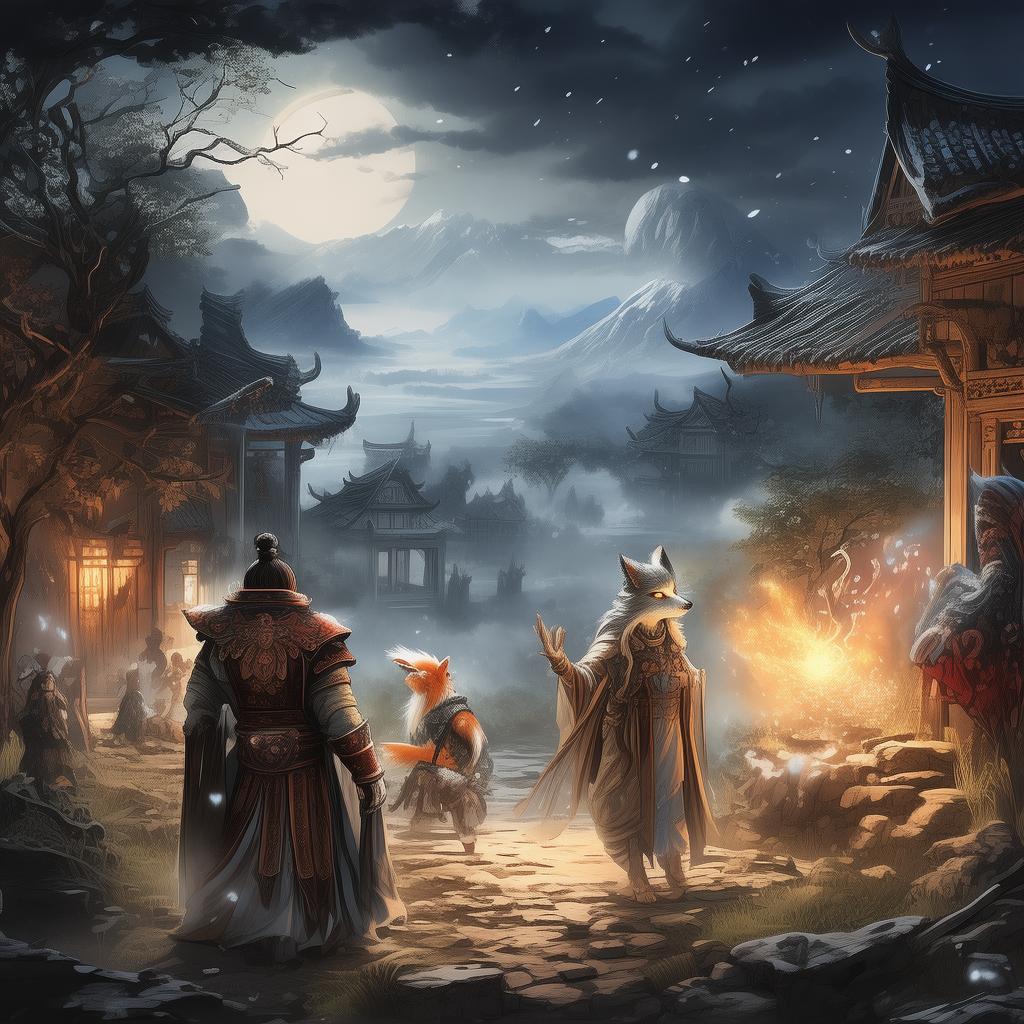The Dreamweaver's Lament: A Tale of Sleep and Redemption
In the heart of an ancient village, nestled between rolling hills and whispering forests, there stood a grand, old bed. Known to all as The Uncle's Dreaming Bed, it was said that those who slept upon it would find themselves in the most vivid dreams. The bed was the creation of a master dreamweaver, a man whose life was as intricate as the patterns he wove into the fabric of dreams.
The dreamweaver's name was Lin, a man of great skill and wisdom. His hands, though weathered, could trace intricate patterns with the precision of a watchmaker. Yet, with each passing year, Lin felt a growing restlessness within him. The dreams he wove were beautiful, but they were not his own. They were the dreams of others, shaped by their desires and fears.
One night, as Lin lay beneath his own creation, a strange dream visited him. In this dream, the bed was no longer a source of wonder, but a burden. It seemed to call out to him, whispering of a greater purpose. In his sleep, Lin felt a surge of inspiration. He realized that the bed could be more than just a vessel for dreams; it could be a tool for redemption.
The next morning, Lin set to work with renewed vigor. He began to weave a new pattern into the bed's fabric, a pattern that would allow the dreamer to experience the essence of rest. This rest was not the physical kind, but a spiritual one, a state of being where the dreamer could confront their deepest fears and desires, and find peace within themselves.
Word of Lin's new creation spread quickly through the village. Curious and hopeful, the villagers began to seek out the dreamweaver. Each night, they would lay upon The Uncle's Dreaming Bed, hoping to find the rest that Lin had promised.
Among them was a young girl named Mei, whose dreams were filled with sorrow. Her mother had passed away, and Mei could not shake the feeling of loss. One night, as she lay upon the bed, she felt the weight of her sorrow lift from her shoulders. She dreamt of her mother, not in sadness, but in peace. When she awoke, Mei felt a sense of solace she had not known before.
As the days passed, more and more villagers found solace in the bed's embrace. Lin's reputation grew, and soon, he was sought after by people from far and wide. They came to him with their dreams of love, success, and freedom, and he wove them into the bed with care and compassion.
However, as Lin's influence grew, so did the responsibilities. He found himself spending less and less time with his family, as his nights were filled with the dreams of others. His own dreams, the ones that once filled his heart with joy, began to fade away.
One night, as Lin lay upon the bed, he felt a deep sense of despair. He realized that he had become a slave to his craft, losing touch with the very essence of rest that he had sought to provide. He awoke with a start, his heart heavy with regret.
That very same night, a great storm swept through the village. The wind howled, and the rain poured down in torrents. As Lin watched the storm from his window, he felt a profound connection to the bed. He knew that the storm was a manifestation of his own inner turmoil.
Determined to change, Lin set out to construct a new bed, one that would bring him peace and allow him to dream again. He spent days and nights crafting this new bed, using the same skill and passion that had once brought him joy. Finally, the bed was complete, and Lin lay upon it, closing his eyes in hope.
As he drifted off to sleep, Lin felt the bed respond to his presence, its fabric alive with the same magic that had once filled his dreams. He dreamt of a peaceful village, where the dreams of all were honored, and where he could find his own rest.

When Lin awoke, the storm had passed, and the village was bathed in the soft glow of the morning sun. He looked around and saw that his dream had become a reality. The villagers were happy and at peace, and Lin felt a sense of fulfillment he had not known before.
From that day on, Lin dedicated himself to both his craft and his family. He continued to weave dreams into The Uncle's Dreaming Bed, but he also found time to dream for himself. The bed became a symbol of balance, a place where rest and construction could coexist in harmony.
And so, the legend of The Uncle's Dreaming Bed lived on, not just as a source of wonder, but as a testament to the power of redemption and the importance of finding rest in the midst of life's chaos.
✨ Original Statement ✨
All articles published on this website (including but not limited to text, images, videos, and other content) are original or authorized for reposting and are protected by relevant laws. Without the explicit written permission of this website, no individual or organization may copy, modify, repost, or use the content for commercial purposes.
If you need to quote or cooperate, please contact this site for authorization. We reserve the right to pursue legal responsibility for any unauthorized use.
Hereby declared.









